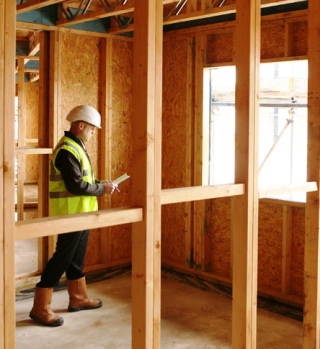On 7th April 2014, Wood for Good, the timber industry promotion and sustainability campaign, launched the largest online life-cycle assessment (LCA) database of any UK construction material.
The free-to-use database, which was unveiled at London’s Building Centre, has been designed to aid the specification of timber and timber products in construction schemes. It contains environmental performance information on a number of timber products from cradle to grave.
 Wood for Good has gathered data on every aspect of the life-cycle, from forestry, harvesting, transportation, processing and manufacturing, through to the various end of life options. The resource includes modern-engineered solutions such as cross-laminated timber (CLT).
Wood for Good has gathered data on every aspect of the life-cycle, from forestry, harvesting, transportation, processing and manufacturing, through to the various end of life options. The resource includes modern-engineered solutions such as cross-laminated timber (CLT).
Using the data, built environment professionals will be able to make informed decisions about the materials they choose and model the impact this will have on the life-cycle performance of the buildings they design.
A key initial finding from the database is that each of the products studied has a carbon negative rating on a cradle-to-site basis. This means that the amount of carbon absorbed and stored in the timber is greater than that emitted from harvesting, processing and transportation.
David Hopkins, project director at Wood for Good, said: “Harnessing all of the environmental and design data that customers need in order to choose timber products in one convenient hub, will support the increased specification of timber.
 “Our initial findings demonstrate that timber has enormous potential to help improve the environmental impact of the building industry. It absorbs carbon dioxide during the growth phase, stores this carbon throughout its life, requires very little energy to process and manufacture and can be used as a low-carbon fuel or a resource for further timber products at end of life.
“Our initial findings demonstrate that timber has enormous potential to help improve the environmental impact of the building industry. It absorbs carbon dioxide during the growth phase, stores this carbon throughout its life, requires very little energy to process and manufacture and can be used as a low-carbon fuel or a resource for further timber products at end of life.
“Through the launch of this resource, and its ongoing development, we aim to position timber as the first choice material for sustainable building.”
The results are the first to be published through Wood First Plus, with future outputs to include the publication of LCA studies at whole-building level across a range of building types, as well as the creation of a toolkit which will allow individual companies to generate their own Environmental Product Declarations.
Wood for Good will also be publishing a “User’s Guide to Life Cycle Assessment” to help project developers use the data in the database and calculate the impacts of their own developments.
To access the database go to: www.woodforgood.com/lifecycledatabase
At BWF Members' Day 2014 (Workshop E), you can explore how to use Environmental Product Declarations (EPDs) and Life Cycle Analysis research to boost the credentials of your products, helping boost your sales and increase profit margins.